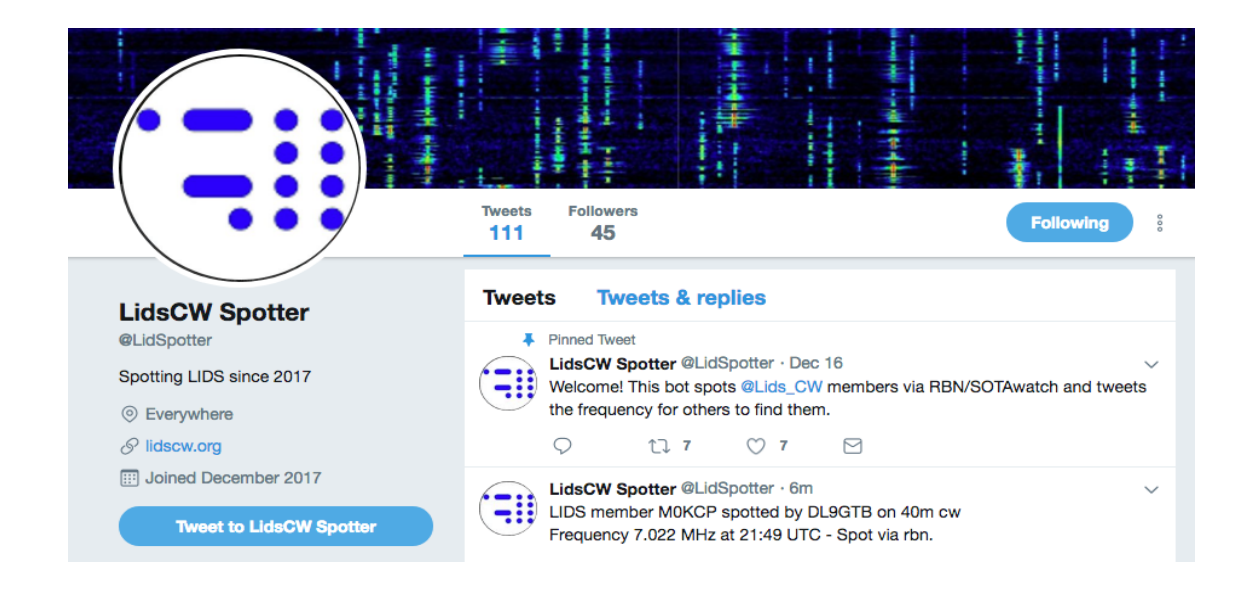It all started with a tweet. Whilst idly tuning up and down the bands, I wondered if there was a way to know if any other LIDS were on air, and then the germ of an idea formed. So like a fool, I tweeted it...

Well, that was it. I was committed now (or should have been). Searching around for ways to pick up spots, I looked at the Reverse Beacon Network, DX clusters, and eventually found the very excellent HamAlert which does all that tedious mucking about in hyperspace for you. You give it a list of call-signs, it compares incoming spots from RBN, clusters, sotawatch and pskreporter. If a spot matches your criteria (in this case, a list of currently 270 call-signs) it can do several things with the information.

Getting the information onto twitter wasn't the easiest, but a web service was found which will turn emails into tweets. So the spots get formatted by HamAlert, sent by email to the WebApp which turns them into tweets, and the LidsCW Spotter is the result.
The only downside of the system as it stands, is the membership list of call-signs needs to be manually updated; no great shakes though as @lids_cw tweets every time a new member is added!
All in all, an interesting exercise, which seems to have produced a useful resource. And if it gets more LidsCW members firing dots and dashes at each other across the airwaves, well, that makes it all worthwhile.

73, Chris G0JPS
#156